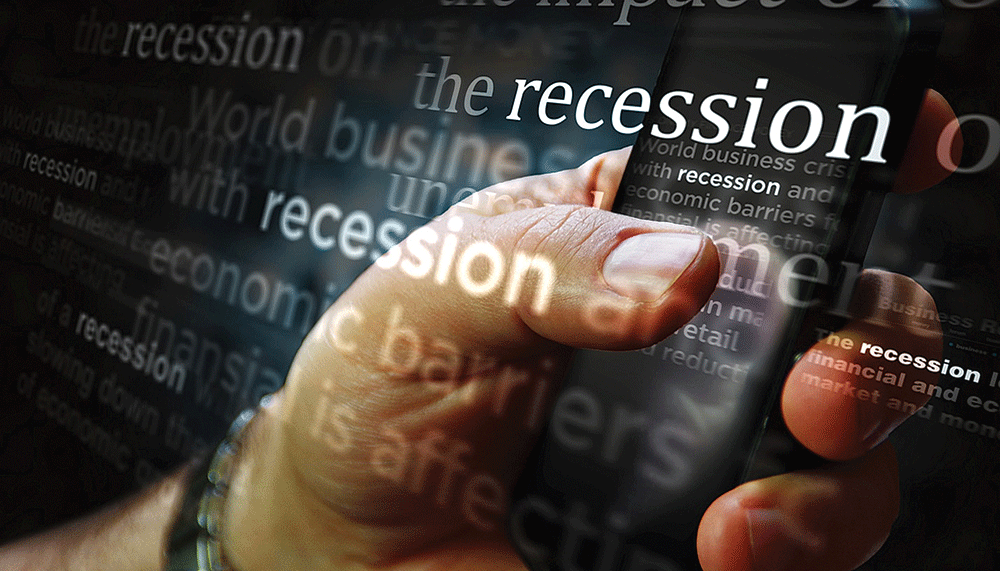
The government has witnessed continued slowdown in revenue mobilisation during the first quarter of this fiscal 2022-23. Despite the government’s target of mobilising revenue worth Rs 1,403.15 billion in this fiscal, merely 14.87% or Rs 208.58 billion has been collected in the first quarter, according to the Financial Comptroller General Office (FCGO). The government had mobilised revenue worth Rs 255.03 billion or 21.6% of the target in the corresponding period of the previous fiscal 2021-22.
Despite high inflation in ongoing fiscal, a substantive fall in government revenue poses challenge in fiscal management and is indicative of the slowdown in the economy triggered by import curb along with prolonged multifaceted impact of the Covid 19 pandemic. A huge shortfall in revenue collection means that the country’s growth is impeded in this fiscal. As an import-driven country, Nepal’s growth is largely fuelled by imports and that is likely to continue to slow until import curb is withdrawn.
There are growing challenges in fiscal and monetary management in the days to come with respect to revenue and growth. Rampant imports cannot happen either as it hits Balance of Payments (BoP) and foreign exchange reserves hard. Growing inflation also means people are less inclined to spend.
Recently, the International Monetary Fund (IMF) has projected growth of 4.2% against the government’s ambitious target of 8% for the current fiscal 2022-23. Consumer price inflation is expected to hover at 6.3%, however, inflation is speculated to soar to a high of 8.64% after 2015-16.
“It is a herculean task to come out from this vicious cycle,” said Nara Bahadur Thapa, an economist with the Economic Policy Incubator (EPI) and the former Executive Director of Nepal Rastra Bank. “The cumulative effect of weak production base, alarming trade deficit, lack of adequate job opportunities and gloomy investment climate in the country since long do not help. Stalled reform process to address the structural problems of the economy escalates the further weakening of the economic condition of the country.”



The future remains indecisive without a strong economic vision to ride the challenges of the current times. It is unclear whether the government has the fortitude and the clarity required to ride the wave of uncertainty.
Inflation skyrockets ahead of election
Inflation has skyrocketed since the beginning of ongoing fiscal year. Consumer price inflation (CPI) was at 8.26% and 8.64% in August and September, respectively. An average inflation rate of 8.45% in the initial two months of this fiscal poses serious challenge to tame and keep it within the desired target of 7%. Inflation was below 4% in the corresponding period of the previous fiscal. Experts indicate that it could hit a double-digit benchmark as money supply will be increased in the upcoming election scheduled on November 20. High inflation continues to make lives of low- and middle-income families difficult. Consumers say they don’t trust Nepal Rastra Bank’s statements on inflation as they continue to bear the onslaught of substantial price rise in commodities especially daily essentials. Dr Yubaraj Khatiwada, former finance minister, has said that the government needed to ensure supplies of essential commodities to control prices and consider reducing tax on fuel imports to help lower transportation cost. Currently, the government has slapped 35% tax on import of fuel. It is assumed that the population living below the poverty line could grow in the days to come. Nepal has about 20% of its people living on less than $2 a day, or below absolute poverty line.Food Security: An emerging challenge
Just a month and a half back, the Indian government increased the export duty on white and brown rice by 20% and banned the export of broken rice. Broken rice was mostly used to produce alcoholic beverages in Nepal. More importantly, the increase of 20% export duty has led to soaring of market price of rice in Nepal. Global commodity price rise following the Covid 19 pandemic was further triggered after Russian invasion of Ukraine. Crude oil price is projected to hover around $101 per barrel for a year. The prolonged war adds to the challenges of refugees in Europe with agro production affected in both Ukraine and Russia escalating food prices. Neighbouring India, the second largest exporter of wheat has already imposed restrictions on its export in light of the projections of food price rise based on global demand as net food production has gone down substantially this year. Ukraine is the fifth largest exporter of wheat. Nepal relies on its southern neighbour, India for import of wheat, rice and other commodities, and is slowly starting to face the adverse impact of the recent measures taken by the Government of India. Nepal imports wheat of roughly Rs 7 billion and rice of approximately Rs 50 billion every annum from India. Being highly reliant on India, Nepal will face extreme challenges in ensuring food security in the days to come. “However, government’s preparation towards coping with the emerging challenge is sorely lacking,” states Prem Lal Maharjan, a consumer rights activist.Balancing mutually exclusive components
Import volume went down substantially in the ongoing fiscal as government-imposed import restrictions remain unchanged. Finance Minister, Janardan Sharma had said that import restriction measures will be withdrawn once the country’s foreign exchange reserve are in comfortable position. According to the Department of Customs (DoC), the country’s imports went down by 16.20% to Rs 400.99 billion in the first quarter of this fiscal compared to Rs 478.52 billion in the corresponding period of the previous fiscal. Export also fell by 35.71% to Rs 41.82 billion in the first quarter. Decline in imports has adversely affected exports. For example, the country relies on exporting soyabean oil, palm oil and other imported products with needful value addition; this had been largely impacted. Imports could further decline as lending rates are elevated up to 18%. Additionally, the central bank has introduced several measures to ease the strain on the country’s forex reserves by narrowing down imports further in addition to elevating interest rate of credit. Since the second half of the last fiscal, provision of cent percent margin to open up L/Cs and increased risk weightage of credit issued for imports shall continue until the government finds it appropriate to review, according to NRB Spokesperson Gunakar Bhatta. Nepal’s gross foreign exchange reserves fell 2% to $9.35 billion in the month to mid-September from mid-July this fiscal - sufficient to cover imports for 7.7 months, as per Nepal Rastra Bank. However, the curve of decline in foreign exchange reserve has flattened. Nepal had witnessed a sharp decline in foreign exchange reserve in the first half of the previous fiscal 2021-22. In the corresponding period of previous fiscal, forex reserves plummeted sharply by 5.2% along with exponential import growth similar to pre pandemic normalcy. A delicate balance between two mutually exclusive components - leveraging economic activities through raising imports or managing comfortable forex reserves for overall stability of the economy - is the need of the hour, according to the central bank officials.
Elevated credit rate is another headache for borrowers and the private sector for leveraging economic activities. Vishnu Kumar Agarwal, President of the Confederation of Nepalese Industries (CNI) has said that credit rate has elevated by 6-7 percentage points in last one year and that creates additional liability of Rs 285 billion to the borrowers of the country’s banking system as the banking industry in Nepal lent Rs 4,750 billion. “Income from business has slumped substantially while liabilities have been expanding,” he said, “This situation could lead businesses towards bankruptcy.” He further said that the government should consider that the crisis faced by the country’s private sector will also impede the effective function of the government and bring pressing challenges to fiscal management. This has been a phenomenal challenge even for developed countries in the current situation. He urged the government to gauge the possible prolonged impact on the government and requested that government work together with the private sector to spur growth and protect the economy from imminent recession. “It is crystal clear that imports are necessary to leverage the country’s economic activities, consumption, jobs and even to boost export. In the near term, Nepal has no alternatives for streamlining imports to accelerate growth and generate revenue. The government and private sector can jointly work for productive capacity enhancement,” said Shankar Sharma, an economist turned diplomat, currently serving as the Ambassador of Nepal to India. The IMF and other development partners are also recommending streamlining imports towards productive capacity enhancement without imposing any restrictions. Reportedly, the process to seal the agreement for availing Extended Credit Facility (ECF) with IMF has been stalled as Nepal continues restrictive measures on imports. The IMF Board had approved SDR 282.42 million (about US$395.9 million) ECF arrangement for Nepal in January this year and stated that SDR 78.5 million (about US$110 million) is available for immediate disbursement. However, the Ministry of Finance (MoF) has yet to seal the deal to avail that $110 million, according to Ishwori Prasad Aryal, Joint Secretary of the MoF and head of the International Economic Cooperation Coordination Division. The future remains indecisive without a strong economic vision to ride the challenges of the current times. It is unclear whether the government has the fortitude and the clarity required to ride the wave of uncertainty. READ ALSO:"Income from business has slumped substantially while liabilities have been expanding. This situation could lead businesses towards bankruptcy.” - Vishnu Kumar Agarwal, President, Confederation of Nepalese Industries
Published Date: November 10, 2022, 12:00 am
Post Comment
E-Magazine
RELATED Feature






